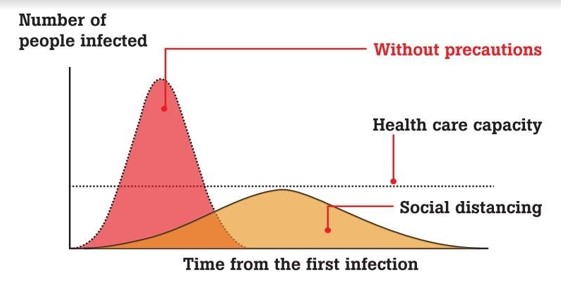COVID 19- The curve has turned slightly in Australia; Is it enough? – By Raj Gonsalkorale
Since case numbers were reported by the Federal Health Department last week, the curve that the writer alluded to in the previous article that was published in eLanka on the 25th March and again on Sunday 29th March, this week’s data so far shows a slight change that could be indicative of a much awaited flattening of the curve.
This data is from the Health.gov.au website and is available to anyone accessing it, so the intention here is not to repeat what is already there, but to reinforce the need to comply with all the health and governments directives and advice, so that the curve can well and truly flatten and decline.
The current status and the trajectory of the curve is shown below

The current daily average increase in positive cases is 9%, and using a conservative figure of a 10% daily increase over the month of April, the potential number of positive cases would still exceed 80,000 on 30th April. Should the average rate of increase declines to say 5%, the total number of positive cases would be around 20, 000. If the average daily rate increases to 15%, the number of positive cases could potentially be more than 300,000 on the 30th of April.
The importance of reducing the rate of increase from the current 9% therefore cannot be stressed with more urgency.
A point that needs to be made is the opinion amongst some younger people that they are less susceptible to getting infected with COVID 19. The following illustration in the Health.gov.au website contradicts this assumption

This illustration shows that infection amongst the age group of 20-29 is the highest amongst all the age groups noted above. The chances of this age group infecting others therefore is also logically the highest.
The age group 30-39 is almost on par with the other group 40-49, 50-59 and 60-69, except the female numbers in the 40-49 group.
Perhaps the most mobile and carefree group amongst all these groups is the 20-29 age group, with female numbers eclipsing the male numbers. They need to exercise greater care as even if they feel they are invincible, which clearly is not the case, as they pose a major risk to people in other groups, particularly the 60-69 and beyond. The parents, grandparents, and other relatives and friends in the more senior categories, who have much less chances of not falling very sick and unfortunately not surviving the sickness, are at great risk unless the younger generations exercise greater care about social isolation and quarantine where necessary.
This is not the writer’s opinion, although it is logically so, but the medical advice that is being given ad nauseam by all medical experts.
Australia is still not over the hill, and going on the basis of announcements made today by the Federal Minister of Health about arrangements for a composite public/private health services delivery partnership, which is an excellent development and one which should continue even after the pandemic is a matter of history, the government of Australia are not taking any chances and they are preparing to meet the health demands arising from a large number of positive cases who may need ICU beds and ventilators. The task of never going there rests with the public. The governments here or overseas have no shields to prevent infections. Only we can do so, and our shield is social isolation, and strict quarantine where necessary.
By slowing the spread of the disease, the number of cases that are active at any given time is reduced. What this does is give some time for the hospitals including medical personnel and the authorities such as the police to prepare and respond, without being overwhelmed. To keep our doctors, nurses, hospitals and police officers from being overtaxed with the number of active Covid-19 patients at a time, the ultimate goal of our health authorities would be to flatten this curve.









One Comment